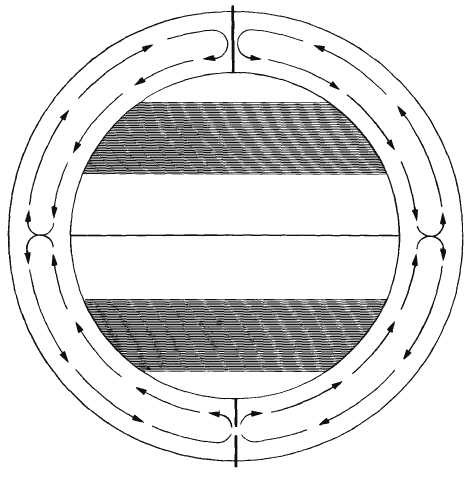1. Earth rotates, resulting in an apparent force
known as the Coriolis force (a deflecting force). This
rotation results in a constant change to the area being
heated.
2. Earth is covered by irregular land and water
surfaces that heat at different rates.
Regions under the direct rays of the Sun absorb
more heat per unit time than those areas receiving
oblique rays. The heat produced by the slanting rays of
the Sun during early morning may be compared with
the heat that is produced by the slanting rays of the Sun
during winter. The heat produced by the more direct
rays at midday can be compared with the heat resulting
from the more direct rays of summer. The length of
day, like the angle of the Sun’s rays, influences the
temperature. The length of day varies with the latitude
and the season. Near the equator there are about 12
hours of daylight with the Sun’s rays striking the
surface more directly. Consequently, equatorial regions
normally do not have pronounced seasonal temperature
variations.
During the summer in the Northern Hemisphere,
all areas north of the equator have more than 12 hours
of daylight. During the winter the situation is reversed;
latitudes north of the equator have less than 12 hours of
daylight. Large seasonal variation in the length of the
day and the seasonal difference in the angle at which
the Sun’s rays reach Earth’s surface cause seasonal
temperature differences in middle and high latitudes.
The weak temperature gradient in the subtropical areas
and the steeper gradient poleward can be seen in figures
3-2A and 3-2B. Note also how much steeper the
gradient is poleward in the winter season of each
hemisphere as compared to the summer season.
3-2
NORTH POLE
SOUTH POLE
POLAR REGION
AREA OF LEAST HEATING
POLAR REGION AREA OF
LEAST HEATING
AG5f0301
EQUATORIAL REGION
AREA OF GREATEST HEATING
Figure 3-1.—Simple circulation.


